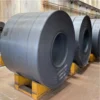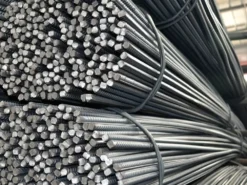| Product name | Carbon Steel Pipe |
|---|---|
| Technology | Hot Rolled, Cold Rolled |
| Surface | Black, Bright, Galvanized Coated |
| Edge | Mill Edge Slit Edge |
| Size | Customized Size |
| Usage | Construction Structure, Industry, Ship |
| MOQ | 1 Ton |
| Delivery time | 7-15 Days |
Product description
Carbon steel pipes are divided into two categories: hot-rolled and cold-rolled (drawn) steel pipes.Hot rolled carbon steel pipes are divided into general steel pipes, low and medium pressure boiler steel pipes, high-pressure boiler steel pipes, alloy steel pipes, stainless steel pipes, petroleum cracking pipes, geological steel pipes, and other steel pipes.In addition to general steel pipes, low and medium pressure boiler steel pipes, high-pressure boiler steel pipes, alloy steel pipes, stainless steel pipes, petroleum cracking pipes, and other steel pipes, cold rolled (rolled) carbon steel pipes also include carbon thin-walled steel pipes, alloy thin-walled steel pipes, stainless thin-walled steel pipes, and special-shaped steel pipes. Hot rolled seamless pipes generally have an outer diameter greater than 32mm and a wall thickness of 2.5-75mm. Cold rolled seamless steel pipes can have an outer diameter of 6mm and a wall thickness of 0.25mm, while thin-walled pipes can have an outer diameter of 5mm and a wall thickness less than 0.25mm. Cold rolling has higher dimensional accuracy than hot rolling.
General carbon steel pipe: It is made of high-quality carbon bonded steel 16Mn, 5MnV and other low alloy structural steel or 40Cr, 30CrMnSi, 45Mn2, 40MnB and other alloy steel by hot rolling or cold rolling, such as 10, 20, 30, 35, and 45. 10. Seamless pipes made of grade 20 low-carbon steel are mainly used for fluid transportation pipelines. Seamless pipes made of medium carbon steel such as 45 and 40Cr are used to manufacture Machine element, such as stressed parts of automobiles and tractors. Carbon steel pipes are generally used to ensure strength and flattening tests. Hot rolled steel pipes are delivered in hot rolled or heat treated condition; Cold rolling is delivered in a heat treated state.
The raw material of carbon steel pipe is round tube blank. The round tube blank is cut by a cutting machine to process the blank with a length of about 1 meter, and is sent to the furnace Negage via a conveyor belt. The billet is sent into the furnace Negage, and the temperature is about 1200 ℃. The fuel is hydrogen or acetylene. Temperature control in the furnace is a crucial issue. After the round tube billet is discharged from the furnace, it needs to be pierced through by a pressure piercing machine. The commonly used piercing machine is a conical roller piercing machine, which has high production efficiency, good product quality, large perforation and expansion capacity, and can pierce various steel grades.
After perforation, the round tube blank is sequentially rolled, continuously rolled, or extruded by three rollers. After squeezing, the pipe needs to be detached and sized. The sizing machine uses a conical drill bit to rotate at high speed into the steel billet for drilling, forming a steel pipe. The inner diameter of the steel pipe is determined by the outer diameter length of the sizing machine drill bit. After the steel pipe is sized, it enters the cooling tower and is cooled by water spray. After cooling, the steel pipe needs to be straightened. After straightening, the steel pipe is transported by a conveyor belt to a metal inspection machine (or hydraulic test) for internal inspection. If there are cracks, bubbles, and other issues inside the steel pipe, they will be detected. After the quality inspection of steel pipes, strict manual selection is also required. After the quality inspection of the steel pipe, the number, specification, production batch number, etc. are sprayed with paint. And lifted into the warehouse by a crane.Carbon steel pipes are made from steel ingots or solid billets that are perforated into tubes, and then hot-rolled, cold-rolled, or cold drawn. Carbon steel pipes play an important role in China’s steel pipe industry.
















